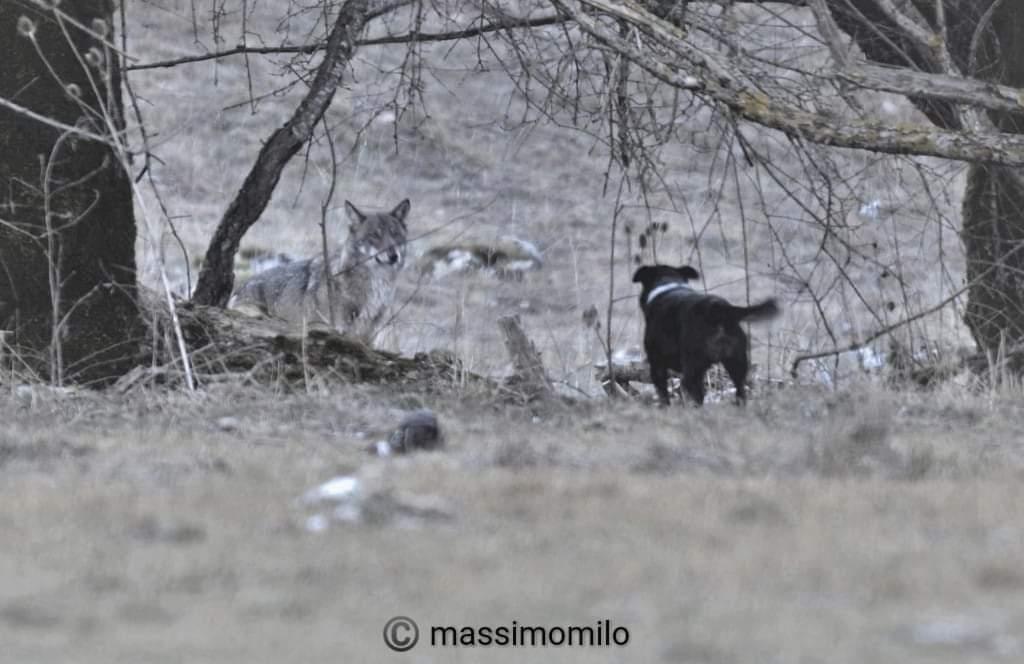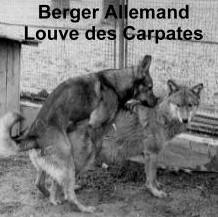
Given the number of wolves in Switzerland, it's obvious that many dog owners have legitimate questions about the risks involved in their daily walks and hikes. First of all, it should be pointed out that, from 1995 to 2024, no domestic dog has suffered an officially recorded attack or been killed by wolves in Switzerland ! As far as guardian dogs are concerned, there have been only a few cases of bites, no fatalities, since the early 2000s. However, a guardian dog has already killed a she-wolf in autumn 2021, in the Vouvry region (Valais), which means that currently, the guardian dog leads the wild canid 1-0. In June 2024, in neighbouring France, a she-wolf from the Dent d'Oche pack was attacked and bitten by two Kangals, but we have not yet been able to establish the seriousness of her injury. It's fair to say, then, that skirmishes between guardian dogs and wolves are fairly evenly matched in terms of injuries.
It's important to understand that wolves are territorial, and will protect their resources (prey), their home range and their offspring, as their instincts dictate. In the case of a wolf from outside the pack, on its territory, we know that it can either be accepted (becoming a pack member for an indefinite period of time) or attacked or even killed. This depends on many factors, mentioned in the HOW WOLVES WORK chapter.
We won't go into this subject in depth, but everyone has heard of "hybridization " between dogs and wolves. It sometimes happens, especially in countries with very poor management of domestic canids, between non-identification by microship, non-sterilization and a never-ending wave of abandonments. But this is not the case in Switzerland, which means that any hybrid wolf arriving on our shores will automatically "re-couple" with his own species, without any worsening of genetics or behavior. In the end, cross-breeding always takes place in the same way, i.e. a she-wolf mating with a male dog, we call this a first-generation hybrid. This shows that, in this scenario, dog and wolf can get along, at least for the duration of the mating !

For all the reasons outlined in this dossier, encounters between two canids are already not guaranteed, even though they are both domesticated. So face-to-face encounters with a wolf, a primitive, wild and territorial canid, are even more uncertain, we have to recognize it. Many owners who have spotted a wolf at close range, while walking their companion, have noted and have been surprised, that the dog is then fearful. However, as we've seen in other areas, every individual is likely to react differently.
There are some simple rules that can help avoid wolf-dog conflicts :
- Tie the dog with a retractable leash or lanyard when walking in the territory of a wolf pack. Or make sure he is perfectly coded and responds consistently to recall as well as basic commands such as "stay".
- Never lose sight of your dog ! He must never leave your field of vision.
- Recall your dog immediately when you see a wolf, and keep him on a leash, right beside you.
- Carry a leash with you on every outing, without exception, even if your dog obeys orders well ! It can help sometimes.
- Once the wolf has gone, always keep your tied up for the rest of the walk (never release him).
Unfortunately, one thing is clear : there are still (too) many off-leash dogs who have absolutely no "coding". By this we mean dogs that only respond to commands every 3-4-10 times, or only when they feel like it, or when nothing distracts them. This is highly detrimental, even reprehensible, since it makes obedience, and therefore control, fluctuate or non-existent. This is first and foremost a problem for the various users, well before it is for the dog's safety against a wild predator ! In the case of uncontrolled obedience, of a dog that wanders and leaves the owner's field of vision, the risks of incidents for others (humans, wildlife), but also for the dog (road traffic, terrain hazards or natural predators) increase rapidly and significantly. In the case of a pack of wolves, especially at certain key periods (breeding/birthing) or during a hunting operation, it is clear that an encounter with a dog could be fatal for the latter, particularly for small breeds, as the predator then logically sees them as prey.
The same applies to stray dogs, but also to hunting dogs. The latter are sometimes released before the hunt, wandering alone day and night, where they may encounter wolves, leading to a potentially fatal outcome. Any unaccompanied dog is at greater risk of attack. Let's be clear : if a owner doesn't code his dog, tie it up or let it roam, the fault, if an attack occurs, will be 100% his - let's be clear about it ! Hunters need to realize this. Wolves are at home, not dogs.
In view of all that has been said in this document, it's important to understand that wolves and dogs are no longer in the same category. The wolves are 100% primitive, with pure instincts, while dogs have been domesticated and undergone physical and behavioral modifications that have altered certain instincts, behaviors, codes and communication. Wolves' territoriality is indisputable, natural, and must be understood and respected.
So, once again, it's up to human beings, to owners, to ensure their companion's safety by taking simple measures : in-depth training to code the dog as it should be coded, to control him at all times and in all situations, or to use a lanyard/leash for total control. As we saw in the DANGEROUSNESS chapter, good observation of our surroundings can also help us anticipate many factors, and the adage "prevention is better than cure" should be taken into account. And we all should know that these rules must be applied not because of the wolf, whatever those opposed to Canis lupus may say, but in order to respect all users, from hikers to cyclists and wildlife (as dogs kill between 500 and 700 wild animals in Switzerland every year).
In conclusion, there have been filmed or reported cases of positive wolf-dog encounters, with no conflicts or predatory attacks. But with the knowledge you now have, it's best not to play Russian roulette with the living world and the many existing factors, which you may not be aware of or have any control over.
NEXT CHAPTER : SOURCES & REFERENCES

Photos: Massimo Milo, Autour des loups & Ecole Canine de Normandie